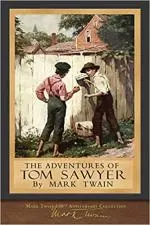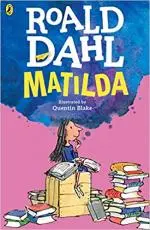Usually as March rolls into April, you’re a little more careful about anything you may see or hear, especially on the internet, for fear of falling prey to a practical joke. As harmless as pranks played on friends and families can be, they can prove irksome, as can the never-ending effort to one-up their perpetrators.
But maybe you're a writer who’s been stuck trying to come up with a smart joke to spice up your story. Why not look to the pranksters of the past for inspiration? Presented here are the most inventive and sly figures in literature. They have all kinds of tricks for you to consult, from the simple, for-laughs-only type, to ones that can help you escape a deadly situation (like, say, meeting a Cyclops or a dictatorial Headmistress).
![]() Odysseus ("The Iliad" and "The Odyssey")
Odysseus ("The Iliad" and "The Odyssey")
As the protagonist of Homer’s epic adventure stories, Odysseus is perhaps not a “hero” in the way we’d think of this title today. He did indeed survive an unbelievable adventure through the Mediterranean while defeating many mighty monsters — but only because he was such a great trickster.
One of the grandest pranks of all time, one so symbolic that today we name computer malwares after it, is the Trojan Horse — Odysseus' brainchild. But that’s not the end of his pranking: another famous one to remember is Odysseus’ prank on Polyphemus the Cyclops. Odysseus broke into the Cyclops' lair, but was caught by the giant (but not so bright) Polyphemus. He went on to battle the brute, claiming that he was called “Noman” or “Nobody” (Outis in Ancient Greek) when he was asked. This meant that Polyphemus ended up exclaiming, “Noman is killing me” when Odysseus struck a strong blow — to which the other Cyclops took as a joke and promptly ignored. Odysseus thereby escaped from the lair, predictably triumphant.
Long story short, when it comes to fooling others to get out of life-and-death situations, “noman” is as skillful and innovative as Odysseus. And his wit does gain him tremendous favor from the Goddess of Wisdom, Athena… so perhaps being mischievous has its merits, too.
![]() Puck ("A Midsummer Night’s Dream")
Puck ("A Midsummer Night’s Dream")
Meet Puck, the impish fairy who stars in Shakespeare’s A Midsummer Night’s Dream, the master of all pranks! Some examples of his greatest hits include: robbing humans of a little happiness by flattening their beers, and confounding travelers so that they lose their way.
His specialty lies in getting people to fall for one another — metaphorically and literally, but mostly metaphorically. As a matchmaker, Puck would trickle droplets of Cupid’s magical tinctures into potential lovers’ eyes. His most sinister project, though, was done in partnership with Oberon, the fairy king, who wanted revenge on his polyamorous wife Titania. To humiliate her, Puck gave arrogant Nick Bottom the head of a donkey before making Titania fall in love with Bottom. In short, Puck killed two birds with one stone: he ridiculed Bottom’s attitude and made the fairy queen fall in love with an “ass” (pun very much intended).
But don’t take this absurd pranking for ill-will — he’s only a fairy with too active an imagination and an ardent enthusiasm for having a good laugh. But Puck isn’t just entertainment for entertainment’s sake: he also serves as a central figure who grounds a play that has alternating storylines and minimal character development.
![]() Tom Sawyer ("The Adventures of Tom Sawyer")
Tom Sawyer ("The Adventures of Tom Sawyer")
Mark Twain’s Tom Sawyer is a playful kid, to say the least. Even in Twain’s classic The Adventures of Huckleberry Finn, Tom stands out as the puppet-master behind the gang’s naughty plans. But there was always a difference between him and Huck: unlike Huck, Tom Sawyer enjoyed a middle-class upbringing, which gave a lightness to his attitude that we don’t often see in Huck.
Famously, Tom’s most ingenious prank had to do with a white picket fence. Basically, he needed to paint a fence, but he didn’t want to paint said fence. So he “encouraged” other boys to help him out. Instead of bargaining for a favor, the way many of us law-abiding citizens would probably have done, Tom dialed up the “joys” of whitewashing, successfully getting his friends to voluntarily take on the work — as if it was an honor.
Of course, we can credit some of Tom Sawyer’s brilliance as a prankster to his passionate love for books: those pages were where he learnt how to have so much fun. So you could say that he’s a kind of role model — that is, if you want your own pranks to be accompanied with an imaginative flourish.
![]() Matilda Wormwood ("Matilda")
Matilda Wormwood ("Matilda")
Matilda Wormwood, titular heroine in one of Roald Dahl’s fantastic children’s books, is blessed with more than just the magical ability to levitate objects: she also possesses a premature sense of awareness and an out-of-the-box way of thinking. She might have had to live with a family that neglected her and bear the brunt of the abuse from a draconian principle — Miss Trunchbull — at school, but she wasn’t going to let them get away with it.
So Matilda played many tricks on both her parents and Miss Trunchbull. One of the simplest yet funniest moments in Roald Dahl’s story is when Matilda glues her dad’s hat to his head. Although, come to think of it, replacing his shampoo with bleach is also a surprisingly hilarious moment. And that time she more or less dropped a newt onto Miss Trunchbull. Suffice to say, all of the little things that she does, with or without her telekinesis power, is ingenious — and a brilliant way to show Matilda’s brightness and positivity in spite of all those who aspire to drag her down.
![]() Fred and George Weasley ("Harry Potter")
Fred and George Weasley ("Harry Potter")
With birthdays on April 1, Fred and George (unsurprisingly) grew up to be two of the most creative pranksters in literary history. Throughout J. K. Rowling's beloved Harry Potter series, Mrs. Weasley probably received more letters from the school regarding their toilet-seat removal renditions and disruptive inventions than about all her other children combined.
Speaking of which, I can’t bring up Fred and George without applauding their massive school-wide prank on the newly announced but well-despised Headmistress, Dolores Umbridge. In a coordinated event, they flooded the school's corridors and set off fireworks throughout the castle (while aerially supervising everything on their broomsticks). To the cheers of students of all Houses (and even some of the teachers) they bid adieu to Hogwarts with a literal bang, leaving Umbridge red in the face.
And what did the Weasley twins do after this premature end to their school career? Well, they opened a shop selling the crème de la crème of all the practical jokes they’ve invented, of course. If only you had the Galleons to buy these goodies.
And there you have it — these are five of the greatest, most inventive pranksters in literature. You might even find some of the examples above in our list of 115 best books of all time! If you’re inspired by any of the tricks they’ve got up their sleeves, drop a comment below. Happy writing!

About the author
Emmanuel Nataf is a Founder at Reedsy, a marketplace and set of tools that allows authors and publishers to find top editorial, design and marketing talent. Over 3,000 books have been published using Reedsy's services.
 Odysseus ("The Iliad" and "The Odyssey")
Odysseus ("The Iliad" and "The Odyssey") Puck ("A Midsummer Night’s Dream")
Puck ("A Midsummer Night’s Dream") Tom Sawyer ("The Adventures of Tom Sawyer")
Tom Sawyer ("The Adventures of Tom Sawyer") Matilda Wormwood ("Matilda")
Matilda Wormwood ("Matilda") Fred and George Weasley ("Harry Potter")
Fred and George Weasley ("Harry Potter")






